#Gareth Branwyn
Explore tagged Tumblr posts
Photo

Artist Nemo Gould's "Click Bait" is the "painful reminder of our folly" we all need Oakland, CA found object artist, kinetic sculptor, and self-described "master accumulator," Nemo Gould, has a number of affordable objets d'art on his website. His most recent offering tickles me to no end. Called "Click Bait," it's an iPhone crossed with a rodent snap trap. — Read the rest https://boingboing.net/2023/03/01/artist-nemo-goulds-click-bait-is-the-painful-reminder-of-our-folly-we-all-need.html
#Post#art#click bait#kinetic art#Nemo Gould#oh god oh god we're all gonna die#phone addiction#Gareth Branwyn#Boing Boing
1 note
·
View note
Photo

https://archive.org/details/1993-cyberpunk-article-utne/mode/2up
Today's cyberpunks aren't the first young generation to be pissed off about the state of the world, but they're the first with the technical know-how to do something about it. They're mad as hell and they can tap into your bank account electronically—or so say St. Vitus and Kid Thalidomide in our lead article by Julie Caniglia from the Minneapolis weekly City Pages. Looking beyond their techno- thuggery. it’s not hard to feel sorry for these rebels with a modem as they face a bleak economic and social future. In other articles, A.J.S. Rayi chronicles the rise of cyberculture, and Gareth Branwyn outlines what influence the emerging computer counterculture will have on our society.
1993... i wonder where they are now.
25 notes
·
View notes
Link
Great, applicable tips from an experienced writer.
2 notes
·
View notes
Text
a Quintessential One Page Dungeon
a Quintessential One Page Dungeon
My friend Gareth Branwyn writes the gaming column for BOING BOING. He posted about this one page dungeon yesterday– inspired by a Youtube and a blog post by Mr. Will Doyle. I agree with the Questing Beast video post about this dungeon– it’s visual, it’s visceral, it doesn’t waste a single word, and most importantly it leaves all the detail filling to you, the GM. I haven’t run a dungeon for…

View On WordPress
1 note
·
View note
Photo



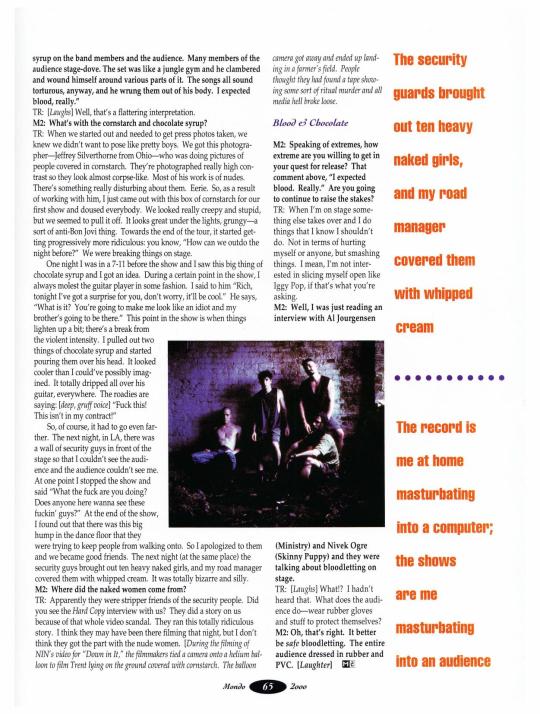
Industrial Introspection: An Interview with Trent Reznor, by Gareth Branwyn Mondo 2000 - January 1st, 1992
(from Happiness In Heresy)
#nine inch nails#nin#trent reznor#richard patrick#lee mars#jeff ward#industrial music#industrial rock#alternative rock#alternative music#90s music#90s article#90s rock#interview#articles#phm era#photos
49 notes
·
View notes
Text
What Is Cyberpunk?
The Roots of Cyberpunk
The real beginning of punk high fashion and bringing the culture more mainstream started from Vivienne Westwood and Malcom Mclaren’s London shop SEX in 1971, culturacolectiva.com writes ‘ The couple’s radical political views led them to generate an alternative style in fashion as a way to go against the establishment. They incorporated the biker look to their clothing line, with lots of leather and zippers. This became an emblem of punk best exemplified by Sid Vicious’ outfits.’ However the real starting of Cyberpunk was from designer Stephen Sprouse and his 1992 collection, which was even before the internet. His collection has major Punk influences, but tied in more futuristic elements, with graffiti style cut out dresses and bold vibrant colours. the latimes.com writes ‘Sprouse unleased and underground sensibility that married punk, rock n roll and pop art clothing with Patricia Field adding’ he was cross between optimism and punk rock’. He never strayed from his influences and made it clear of his influences in the music such as Debbie harry or Andy Warhol. WGSN writes ‘ the idea of punk rebelliousness has never waned and all of its visual stylistic cues continue to be reused and reinvented’.



-Stephen Sprouse 1992
Another big name in in Cyberpunk is punk rock artist Billy Idol. In 1993 he brought out his concept album naming it Cyberpunk, it was influenced by his own interest in technology and the start of him starting to experiment with using computers to make his music. With him already being an established artist in the punk rock world, him leaning more into futuristic aspects and the mix of both was a very bold but popular move at the time. The article How to be Cyberpunk on vice.com writes ‘something broke in the mix of drugs and sex and leather-clad hacking. In the slippage from underground Billy Idol, from subculture to fashion, form present to future the movement evaporated or maybe just evolved’.


Gareth Branwyn wrote the ‘Cyberpunk manifesto’, within it was views that link to the Punk mentality we all know mixed in with newer views as well, for example you can see the Punk influences from ‘mistrust authority’ and ‘do it yourself and fight the power’, with newer technological views ‘information wants to be free’, ’access to computers and anything which may teach you something about how the world works should be unlimited and total’. The new cyber twist on it, including online presence shows a more optimistic look of the world moving on, becoming more present. Linking back into Patricia Fields point, vice.com also says something along the same lines that ‘For all of its gloom, cyberpunk contains a muted optimism too, a utopian idea that ruins and scaffolding are the perfect materials for a new system. “Science fiction is liberation," wrote Robert Anton Wilson in his introduction to the 1989 Semiotext(e) SF issue (he described himself as “ever eager for new dimensions of insanity")’.
Cyberpunk in present
WGSN writes ‘placed in a digital context, those tropes can take on a futuristic dystopian aura that examines some of the darker aspects of technology while incorporating #softmasculinity sentiments associated with todays TikTok influencer e-boy culture’. With lockdown across the country and TikTok blowing up during it, there was what some would call an alt wave, where more and more young people were experimenting with their styles, especially with more alternative looks. During this time a group of teens blew up on the app calling their style e-boy or e-girls, which stands for electric boy/electric girl. This style was grunge inspired look mixed with newer technology aspects, some of these outfits being very closely linked with softer Cyberpunk looks. Again it became popular to mix an older subculture with a newer style. Cyberpunk isn’t the only style that has been influenced by the new cyber world, there were also Cybergoth that got traction in the 2010′s.


3 notes
·
View notes
Text
Boing Boing is 20 (or 33) years old today

Mark Frauenfelder:
Today is the twentieth anniversary of Boing Boing in its current incarnation. It looked like this in 2000.
Here's a brief history of Boing Boing, which actually goes back 33 years.
Carla and I conceived of it as a print zine in 1987. The first issue of bOING bOING came out in 1988. We printed 100 copies on a Xerox machine. I sent a copy to Factsheet Five, which was a zine that reviewed zines. Based on the review that ran in Factsheet Five, we sold all the copies. We also got an order from a newsstand distributor for 100 copies of the next issue. So we printed 200 copies of the second issue, sending 100 to the distributor and 100 to people sending $3 cash to us in the mail. We basically followed a Moore’s law style growth curve. The final issue of bOING bOING, number 15, had a print run of 17,500. Unfortunately it was our last print issue because our two major newsstand distributors went bankrupt, owing us tens of thousands of dollars.
In 1995 I was an editor at Wired and one of my friends who worked at Hotwired, the magazine's online spinoff, registered boingboing.com for us and we started running occasional articles on the website.
In 2000 I wrote an article for a magazine called the Industry Standard, about web logs. To learn about how web logs worked, I got a Blogger account and started posting things on boingboing.net (I forgot to register boingboing.com so a design firm with the same name took it). 
The first item I posted to Boing Boing was on January 21, 2000, 20 years ago today. My early blog posts didn’t have headlines or photos. The posts were just links and short descriptions to things that I found interesting.
One of the first people to discover the blog was Cory Doctorow, and he would send me lots of ideas of things to write about. After a few months I asked Cory if he would like to have an account on Boing Boing and post directly. He agreed, and I was surprised to see him post seven or eight or more items every day. This was an order of magnitude more than I had been posting. I typically posted two or three items a week!
As a result of Cory's prolific posting, the traffic shot through the roof. Soon after that my friend and a bOING bOING print zine editor, David Pescovitz joined, and shortly after that Xeni Jardin became one of our editors as well. A few years later Rob Beschizza joined as an editor and Jason Weisberger came on board as publisher. Carla, the cofounder of bOING bOING magazine also writes and edits for Boing Boing. Another bOING bOING editor, Gareth Branwyn continues to write for us. And Ken Snider keeps the whole thing running with his exemplary technical chops.
It's incredible to me that Boing Boing still has the original band line-up. I’m always excited to see what my co-editors post every day, and Boing Boing remains my favorite place on the Web, because I love their points of view. Even when I don’t agree with what they have to say 100% of the time, I always find what they have to say interesting and worthy of consideration. Carla and I would like to thank Cory, David, Gareth, Jason, Rob, and Xeni for joining us on what has become a life journey. We'd also like to thank everyone who has been reading Boing Boing over the decades, because your interest in what we do is what motivates us to keep this up.
https://boingboing.net/2020/01/21/boing-boing-is-20-or-33-year.html
28 notes
·
View notes
Link
“Of all of the strange instruments that've worked the edges of popular music,” writes Gareth Branwyn at Boing Boing, “the Mellotron is probably the oddest. Basically an upright organ cabinet filled the tape heads and recorded tape strips that you trigger through the keyboard, the Mellotron is like some crazy one-off contraption that caught on and actually got manufactured.”
2 notes
·
View notes
Photo
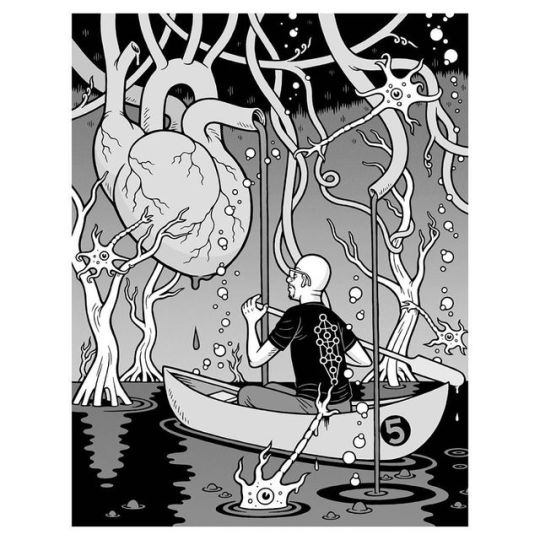
"BOATING THE ABYSS" ILLO FOR GARETH BRANWYN MEMOIR Dec 26, 2013 #ILLO #ILLUSTRATION #ILLUSTRATOR #SURREAL #SURREALISM #HEART #PULMONARY #NERVE #NEURON #FANTASY #SCIFI #SCIENCEFICTION #MEDECINE #MEDICAL #HEALTH #CANOE #KAYAK #ROWBOAT (at Park Slope Historic District) https://www.instagram.com/p/B3XYgAbDhLX/?igshid=t25aw1yng4nx
#illo#illustration#illustrator#surreal#surrealism#heart#pulmonary#nerve#neuron#fantasy#scifi#sciencefiction#medecine#medical#health#canoe#kayak#rowboat
2 notes
·
View notes
Text
Boing Boing

Boing Boingis a website, first established as azinein 1988, later becoming agroup blog. Common topics and themes includetechnology,futurism,science fiction,gadgets,intellectual property,Disney, andleft-wing politics. It twice won theBloggiesfor Weblog of the Year, in 2004 and 2005. The editors areMark Frauenfelder,David Pescovitz,Carla Sinclair, andRob Beschizza,[1]and the publisher isJason Weisberger.
One report named Boing Boing as the most popular blog in the world until 2006, when Chinese-language blogs became popular,[2][3]and it remained among the most widely linked and cited blogs into the 2010s.[4][5][6]
Boing Boingfeatured a "guest blogger" sidebar, then stopped the series in summer of 2004. In 2008, the "guest blogger" series was resumed, with guests posting in the main blog for two-week periods. Guests have includedCharles Platt,John Shirley,Mark Dery,Tiffany Lee Brown, Karen Marcelo ofSurvival Research Laboratories,Johannes Grenzfurthnerofmonochrom,Rudy Rucker,Gareth Branwyn,Wiley Wiggins,Jason Scottoftextfiles.com,Jessamyn Westoflibrarian.net, journalistsDanny O'BrienandQuinn Nortonand comedianJohn Hodgman.
In September 2006,Boing Boingintroduced a weeklypodcast, "Boing Boing Boing", intended to cover the week's posts and upcoming projects. The show's cast consists of theBoing Boingeditors, accompanied by a weekly guest. In the same month,Boing Boingintroduced a second podcast called "Get Illuminated", which features interviews with writers, artists, and other creatives.
1 note
·
View note
Text
Let's celebrate Sly Stone (and other music greats) while they're alive
Let’s celebrate Sly Stone (and other music greats) while they’re alive
Let’s celebrate Sly Stone (and other music greats) while they’re alive https://ift.tt/2N4WWW6 Gareth Branwyn Cool Tech via Boing Boing https://boingboing.net February 17, 2021 at 02:05AM
View On WordPress
#Dance Music#DJCyberStream#djcybertsai#EDM#House#melodic techno#Melodic Trance#psytrance#Sawagi Noise#techno#Trance
0 notes
Photo

The low-down on the potentially devastating effects of long COVID Rebecca Watson, the founder of the Skepchick Network, discusses long COVID and chronic fatigue syndrome in this video. Specifically, she highlights Dianna Cowern's (Physics Girl) battle with long COVID. Cowern has been suffering from symptoms such as brain fog, shortness of breath, and chronic fatigue for several months. — Read the rest https://boingboing.net/2023/04/04/the-low-down-on-the-potentially-devastating-effects-of-long-covid.html
0 notes
Text
Beyond Cyberpunk:A Do-It-Yourself Guide to the Future

‘’Beyond Cyberpunk: A Do-It-Yourself Guide to the Future" Gareth Branwyn /Peter Sugarman (1991/93)
download - https://archive.org/details/BeyondCyberpunkMacintosh
FULL ONLINE VERSION--- http://www.streettech.com/bcp/index.html
Here is an excerpt from the preface: "When we began Beyond Cyberpunk! (BCP), there was no such thing as the World Wide Web. Hypermedia programs like Apple's HyperCard were the only way to inexpensively deliver hypertext with linked sounds, images, and animation. We saw in HyperCard the opportunity to create a compendium of all this cybercultural output. We wanted to map the territory, but to do so in a way that allowed the user to explore her own links and interests. We tried to cram in as much material as we could, covering everthing from high-brow crit theory to sci-fi lit and films to the wired worlds of hackers/crackers and the zine publishing scene which was starting to move into cyberspace. The result was a 5.5 megabyte "connect-the-dots" cyber-manifesto. In 1993, we followed up the first BCP stack with a one-disk update."
10 notes
·
View notes
Text
Tour a spot-on recreation of the sets for Star Trek: The Original Series
Tour a spot-on recreation of the sets for Star Trek: The Original Series
‘…[James Cawley, an Elvis impersonator and] Star Trek fan …used the blueprints to the sets of the original Star Trek Enterprise to lovingly re-create those sets in a former supermarket in upstate New York. “Star Trek: Original Series Set Tour” is located in downtown Ticonderoga, New York….’ — Gareth Branwyn via Boing Boing Wired reported on this in 2016. It just so happens that my family and…

View On WordPress
0 notes
Photo






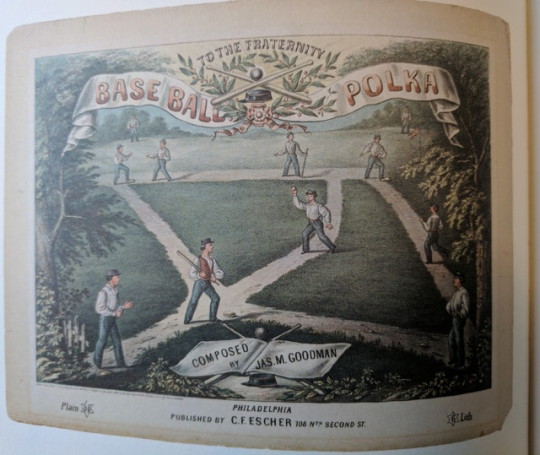
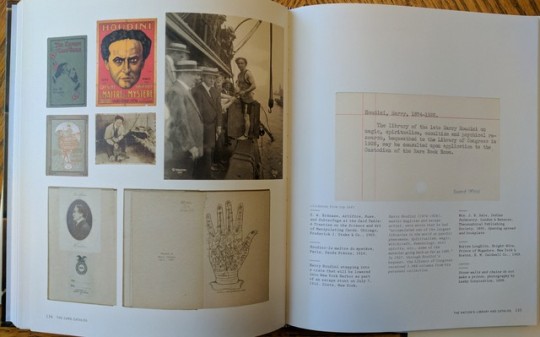
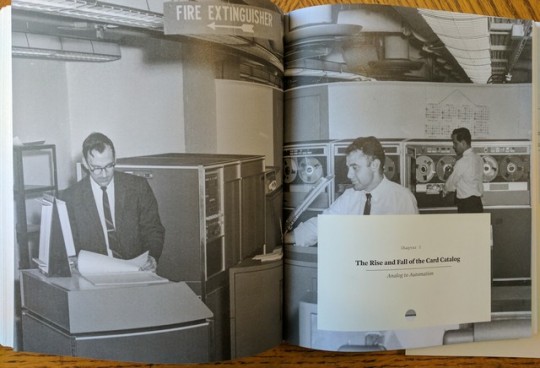
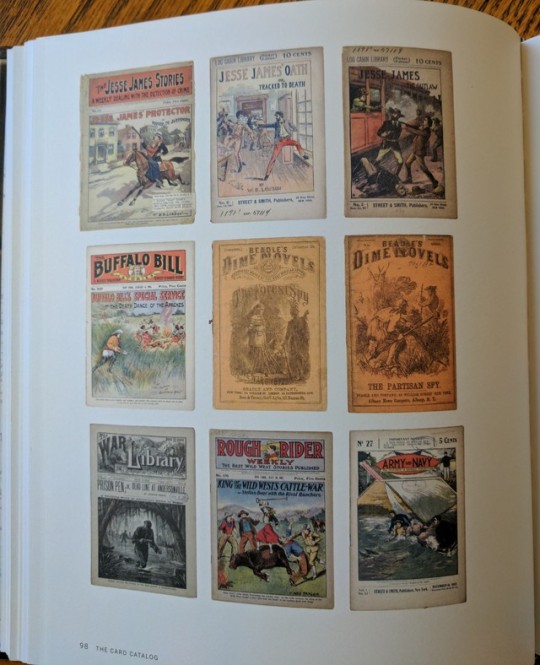
A thoughtful, loving, and visual tribute to the humble library card catalog
The Card Catalog: Books, Cards, and Literary Treasures by The Library Congress Chronicle 2017, 224 pages, 7.5 x 1.0 x 9.0 inches, Hardcover $22 Buy on Amazon
When I was an eggheaded teenager growing up in a sleepy Southern Baptist town, I lived for my little local library. It was like a desert oasis to me and I spent hours in it, perusing the books and magazines, browsing the card catalog, and requesting strange and obscure books that made my librarian frown and twist her lip up funny.
Of the many features of the library, it was the card catalog that held a unique fascination for me. Being a budding information junkie, the card catalog seemed almost magical, my gateway to all sorts of exotic ideas and adventures, buried amongst the mundane, waiting to be unearthed by the eager flicks of my fingertips. I loved everything about the card catalog: the thick oak cabinet with numerous tiny drawers that slid out easily with their heavy loads of often crammed-tight 3x5 cards. The knurled brass knob and rod that held the card stacks in the drawers. The cards themselves, sometimes neatly and perfectly typed out, other times, hand-written or heavily annotated, struck through, and carefully painted with white-out. Some cards seemed to have acquired plots and stories of their own. I can even remember the satisfying thunk the drawers would make when you pushed them back in. And the smell! The thought of that smell is a like a Proustian moment that easily invokes this part of my childhood.
So you can imagine how excited I was when an unsolicited review copy of The Card Catalog: Books, Cards, and Literary Treasures showed up on my doorstep. If the subject-matter and the lovely cover, with its card catalog half-wrap (featuring Whitman’s Leaves of Grass), didn’t win me over, they had me after I opened the book up to discover a pocket and library check-out card on the inside front spread.
The book includes a history of the card catalog, the Library of Congress, and the automation technologies that eventually killed analog card systems, but the heart and soul of this book are the photos of the actual cards of famous books in the Library’s collection and covers of the books themselves. The majority of The Card Catalog is a series of facing pages with a photo of the book on one side and the catalog card on the other. There are also pictures of library supply catalogs of the turn of the century (showing catalog cabinets, typewriters, and various types of date and other stamps), and plans and photos of the Library of Congress under construction. There are also lots of interesting facts and trivia throughout the book. Like, I had no idea that, from 1901 to 1997, the Library of Congress actually produced library catalog cards and supplied them to local libraries. So, many of the cards in my local library were likely not produced on-site, but rather, came from Washington.
The Card Catalog: Books, Cards, and Literary Treasures was released this week to coincide with National Library Week. Now, more than ever, we need to be celebrating book-learnin’ and a culture of intelligence, truth, and inquiry. This lovely volume will likely be a potent reminder of the power of learning and exploring ideas, at least for bookworms of a certain age.
– Gareth Branwyn
April 7, 2017
14 notes
·
View notes
Video
youtube
Epic Coliseum build found on Boing Boing My friend Gareth Branwyn just posted this, so I thought I’d share the wealth. Yes, I’m that impressed. not sure I’d ever have the time nor talent, though.
0 notes